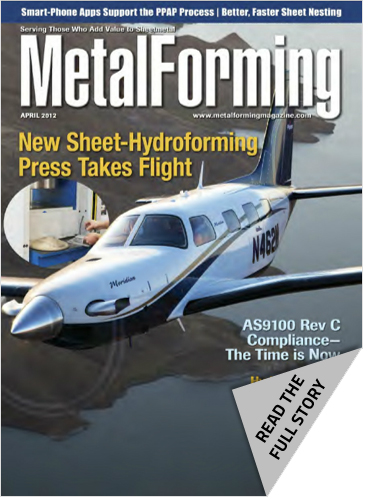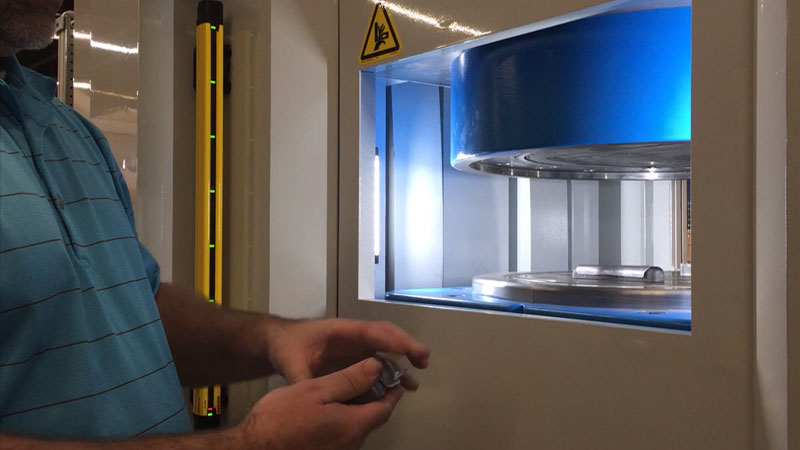Quick Facts
| Type of Press | Triform Fluid Cell 16-5FC | ||
| Max Chamber Pressure | 5,000 PSI | ||
| Industry | Aerospace | ||
| Forming Area | 16" Diameter | ||
| Form Tool Clearance | 4.75" | ||
| Daylight | 5.5" | ||
| Cycle Time | <20 seconds | ||
| Challenge | Develop a hydroforming solution that is compact and portable. | ||
| Solution | Triform’s unique pressure containment systems allow for significantly reduced press size and weight, without sacrificing structural integrity or durability. Piper’s Triform requires no special ceiling height requirements or special foundations due to its flush floor design. The 16-5BD’s portability is in stark contrast to other hydroforming presses, which due to the size, weight and need for expensive pits & foundations, have been termed ‘monuments’. | ||
| Challenge | Provide a machine with quick bladder changes. | ||
| Solution | Triform press systems facilitate fast, simple and inexpensive bladder changes to increase up-time and minimize overall costs. Bladder changes on the Triform 16-5BD can take as little as 30 minutes and can be performed by a team of 1-3 people. | ||
| Results | Piper has transitioned over 500 parts from its line, approximately 20% of the overall production, to the new fluid cell press. |
 Piper Aircraft, Inc., located in Vero Beach, Florida manufactures general aviation aircraft. Founded in the 1920s, they have been using pad forming and sheet hydroforming for decades. Their existing large-format, tray-style hydroforming press required expensive bladder changes that could take weeks to complete.
Piper Aircraft, Inc., located in Vero Beach, Florida manufactures general aviation aircraft. Founded in the 1920s, they have been using pad forming and sheet hydroforming for decades. Their existing large-format, tray-style hydroforming press required expensive bladder changes that could take weeks to complete.
Piper wanted a new hydroforming press that could handle a significant percentage of their part-forming requirements and maximize up-time with fast, inexpensive diaphragm changes.
Beckwood evaluated Piper’s needs and recommended a Triform fluid cell sheet hydroforming press. The model 16-5FC features 5000 PSI of forming pressure, a 16-in. diameter forming area, and intuitive recipe handling. Their new press allows for significantly decreased down-time and increased cost-savings, with diaphragm changes taking less than 30 minutes to complete at a fraction of the cost.
Triform also increased Piper’s throughput, as their cycle time dropped from 90 seconds on the tray-style press to just 15 seconds on the more nimble 16-5FC. Plus, tool changes on the small, flush floor Triform are considerably less cumbersome than those performed on the larger machine.
Piper has transitioned over 500 parts from its line, approximately 20% of the overall production, to the new press. These parts are now formed faster on the Triform, and the life of their aging tray-style machine can be extended due to the workload sharing.
“We typically produce 10 to 30 parts per setup, then change tooling,” says James Priest, lead press operator. “We might change tools 15 times or more per shift. With the Triform, tool changes literally take seconds. Conversely, changing tools on our larger hydroforming presses can take 30 minutes or more.”


